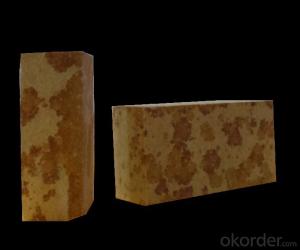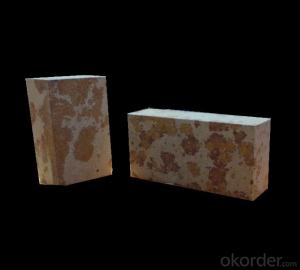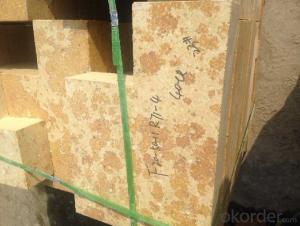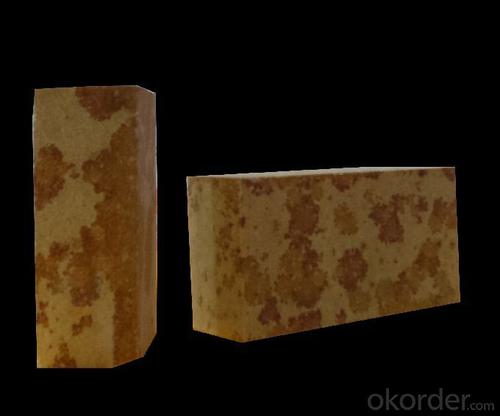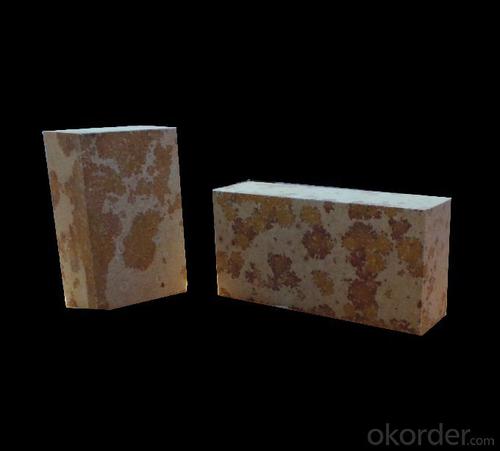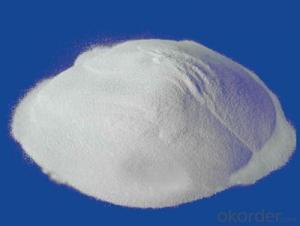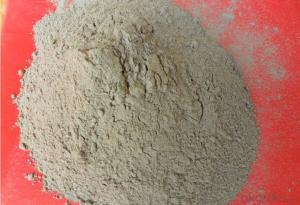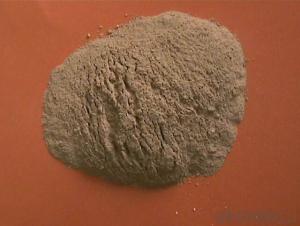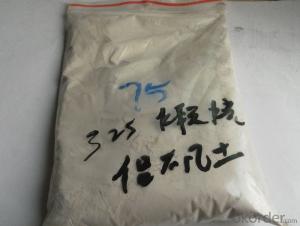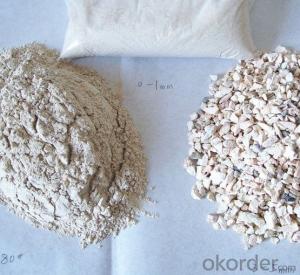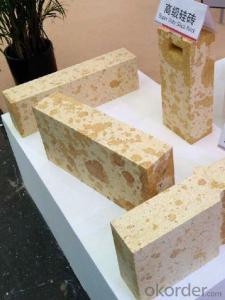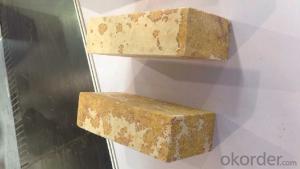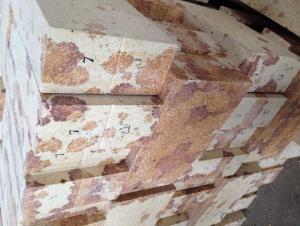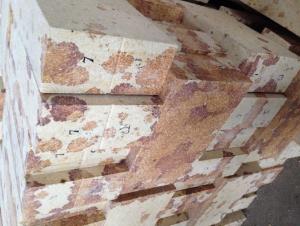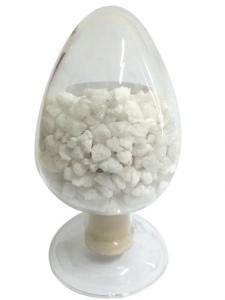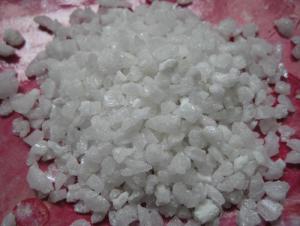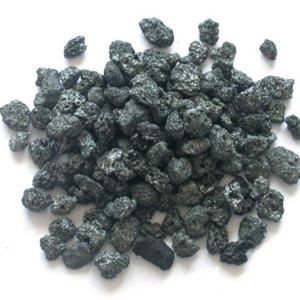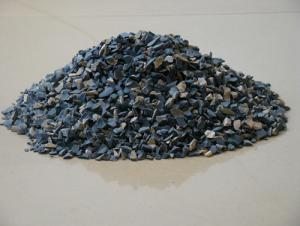Raw Materials for Refractory:High Density Silica Brick 96A
- Loading Port:
- Tianjin
- Payment Terms:
- TT OR LC
- Min Order Qty:
- 20 m.t.
- Supply Capability:
- 5000 m.t./month
OKorder Service Pledge
OKorder Financial Service
You Might Also Like
General Information:
CMAX brand Silica bricks are made from high quality quartz tail sand, lime and mineralizing agent through the process of crashing, screening, mixing, pressing, drying and sintering.
Features of Refractory silica bricks for Glass Kiln:
1. high volume density of 2.34 g/cm3
2. high SiO2 content of 96%
3. low iron content of 0.8%
4. low melting point of 5%
Applications of Refractory silica bricks for Glass Kiln:
Because of the high temperature resistant performance significantly, long service life characteristics (as long as more than eight years) of refractory silica brick for Glass Kiln, it can significantly improve the quality of glass, so the refractory silica bricks are widely used in all kinds of glass furnace melting department, regenerator and other important parts.
Physical and chemical index of refractory silica bricks for glass kiln:
Item Brand | CMAX-96A | CMAX-96B | ||
SiO2 % ≥ | 96 | 96 | ||
Al2O3+2(K2O+Na2O) % ≤ | 0.5 | |||
Fe2O3 % ≤ | 0.8 | 1 | ||
Refractoriness °C ≥ | 1710 | 1710.0 | ||
0.2MPa Refractoriness under load °C ≥ | 1680 | 1670 | ||
Apparent porosity % ≤ | Brick with weight no less than 20kg | 20 | 20 | |
rick with weight less than 20kg | 22 | 22 | ||
CS MPa ≥ | 35 | 35 | ||
Bulk desity g/cm3 ≤ | 2.34 | 2.34 | ||
Starndard Size:
230*114*64mm
230*114*76mm
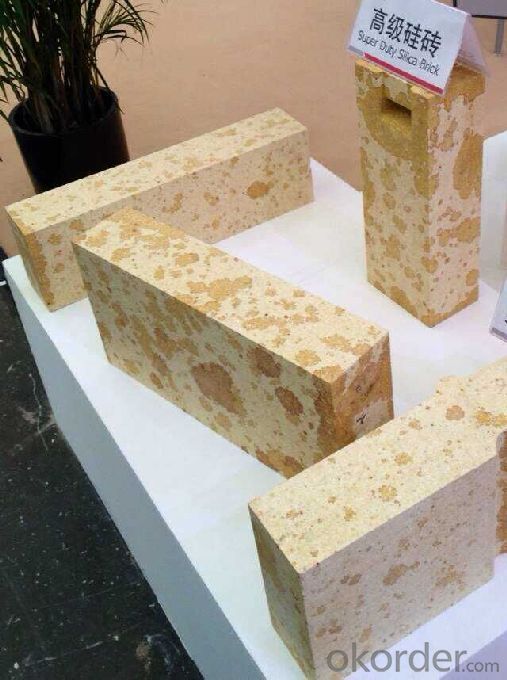
- Q: Can someone professionally introduce the classifications of refractories?
- It can be divided into two categories of ordinary and special refractory. Ordinary refractories can be devided into acidic, neutral and alkalinee refractories according to chemical properties. Special refractory can be devided into high temperature oxide, refractory compounds and high-temperature composite materials according to the compositions. Furthermore, it canbe devided into ordinary refractory products (1580 ~ 1770 ℃), advanced refractory products (1770 ~ 2000 ℃) and super refractory products (above 2000 ℃) according to the strength of refractoriness. It can be divided into bulks (standard brick, special-shaped brick, etc.), special shape (crucible, sagger, pipe, etc.), fibrous (aluminum silicate, zirconia and boron carbide, etc.) and Indefinite shape (refractory clay, castableand ramming mass, etc.) according to the shapes of products. According to the sintering process, it can be divided into sintered products, cast products, melting jetting products.
- Q: How many kinds of A-level fireproof and thermal insulation materials are there?
- Please give us some information about the kinds of A-level fireproof and thermal insulation materials in the market.
- Q: What's the refractory material?
- Main components of basic refractory are magnesium oxide and calcium oxide, and magnesia brick is commonly used. For the magnesia brick with magnesium oxide content of more than 80%-85%, it has good resistance to basic slag and scum, and it has higher refractoriness than that of the clay brick and silica?brick. It is mainly applied to the open hearth furnace, oxygen-blown converter, electric furnace, non-ferrous metal smelting equipment and some high-temperature devices.
- Q: I want to consult the fire resistant level standards of external wall thermal insulation materials.
- 1, The building with the height larger than or equal to 100m, should have the A-level combustion performance. 2, The thermal insulation material of the building, with a height larger than or equal 60m and less than 100m, should not be less than the level B2 combustion performance. When using the level B2 insulation material, each level should set horizonal fire barrier zone. 3, The thermal insulation material of the building, with a height larger than or equal to 24m and less than 100m, should not be less than the level B2 combustion performance. When using the level B2 insulation material, each two levels should set horizonal fire barrier zone. 4, The thermal insulation material of the building, with a height less than 24m, should not be less than the level B2 combustion performance. When using the level B2 insulation material, each three levels should set horizonal fire barrier zone. I hope my answer will help you. Thank you!
- Q: How many refractory materials does the annual output of 1 million tons of coke oven require?
- Refractory materials are expensive, and any refractory accident will lead to a considerable waste of production time and equipment, and sometimes even the product itself. The type of refractory material will also affect energy consumption and product quality. Therefore, it is very important to select the refractory material which is most suitable for various applications. While the economic benefits have great influence, refractory material most suitable for some applications need not be used for materials, but can achieve a balance between material installation cost and performance, this balance is not fixed, but with the introduction of new technology or new refractory materials and changing. History has proved that unremittingly seek metallurgical process more reasonable and development, greatly promoted the development of refractories, quickly resolve these problems has become the modern refractory steel technology development is an important element. The content of this article is to discuss a number of factors including these issues and to provide information on how to solve them.
- Q: how to divided the external wall thermal insulation materials fire rating
- Level A: Incombustible building material: It is a kind of material that almost does not occur burning. Level B1: Nonflammable building material: Non-flame material has good flame resistance. It is difficult to fire under the condition of open fire in the air or high temperature, and it is not easy to quickly spread, and when the combustion?source is removed, the combustion will stop immediately. Level B2: Combustible?building?materials: Flame material has a good flame resistance. In case of fire in the air or at high temperature, it will immediately burst into flames, and easily lead to the spread of fire, such as wooden column, timber roof truss, timber beam and wooden stairs. Level B3: Combustible?building?materials: It has no any flame resisting effects, and is easy to burn, so the fire risk is high.
- Q: What's the classification of refractory material?
- Magnesium aluminum is complex and mainly seeing what classification standard is like according to the appearance shape can be divided into two categories, setting and not setting according to the acid alkali can be divided into acidic, magnesia, high aluminum, ramming expected, spinel, spray coating, plastic, just the quality of the jade, daub material according to the chemical composition is divided into, such as clay, neutral and alkaline according to the operation mode can be divided into different castable, magnesium, calcium, magnesium chrome
- Q: Does anyone know fire-proof material of fireproof wooden door?
- Fireproof wooden door goes through the flame treatment, so it can prevent fire. Its principle: Fire-retardant treated timber has become flame retardant material itself and its fire endurance has increased. The commonly used method of fire retardant treatment for timber including: Spraying method, soaking method, boiling method, vacuum method, vacuum-pressure method.
- Q: how to classify Insulating Refractory ?
- We are glad to answer your questions! This one is professional. My advice is to go through relevant webs for reference.
- Q: What are the new refractories?
- Silicon carbide kiln furniture and mullite cordierite kiln furniture. Jing Cheng Refractories Plant in Yanshi City 0379-62222036
Send your message to us
Raw Materials for Refractory:High Density Silica Brick 96A
- Loading Port:
- Tianjin
- Payment Terms:
- TT OR LC
- Min Order Qty:
- 20 m.t.
- Supply Capability:
- 5000 m.t./month
OKorder Service Pledge
OKorder Financial Service
Similar products
Hot products
Hot Searches
Related keywords
